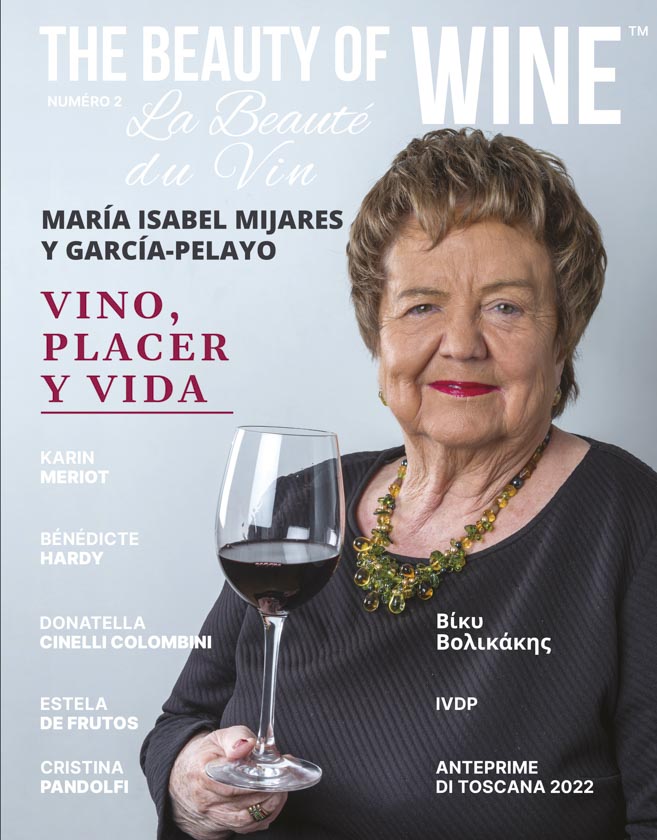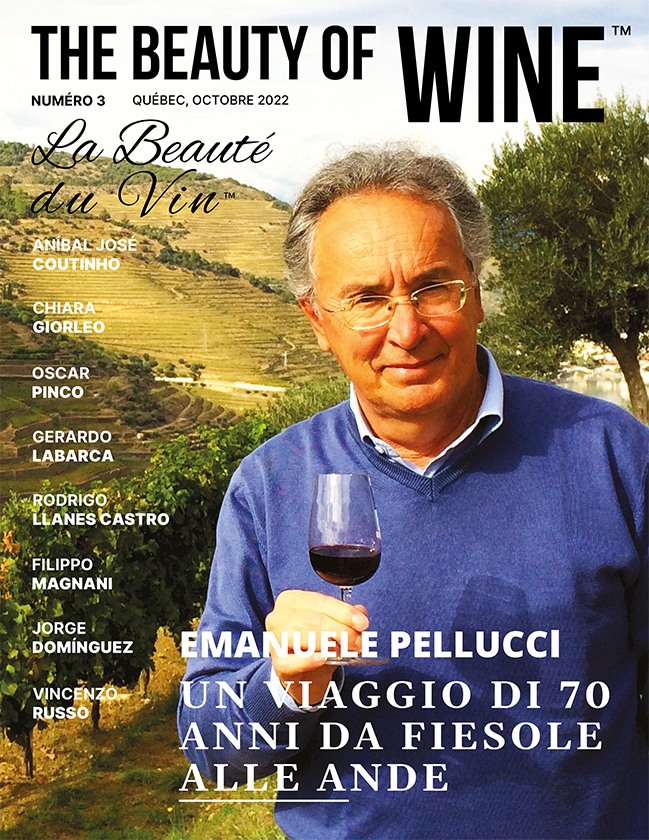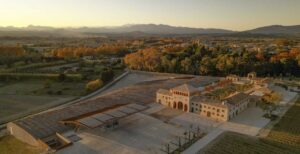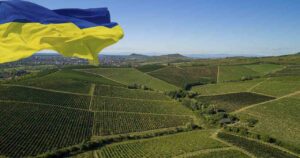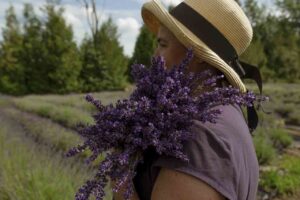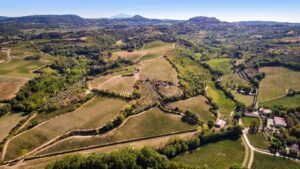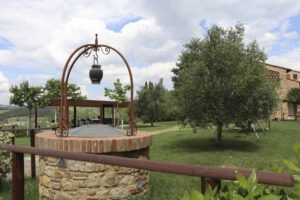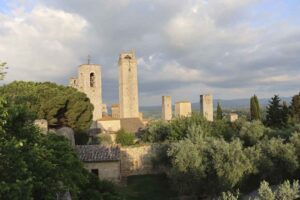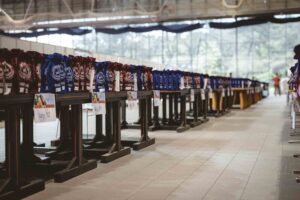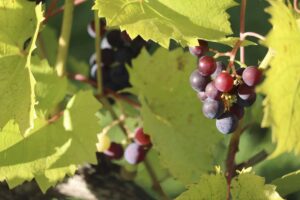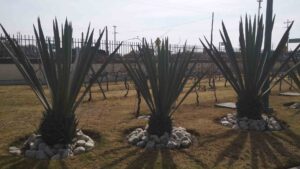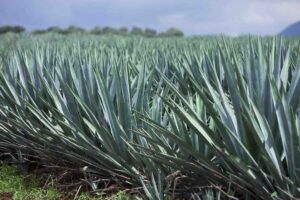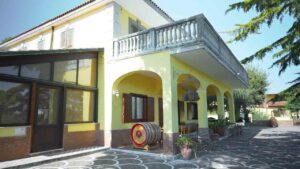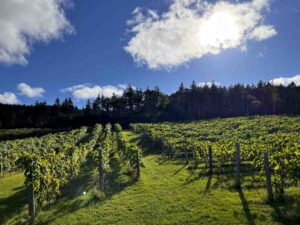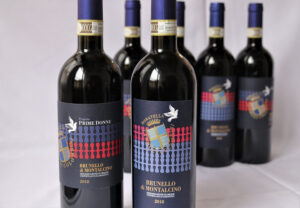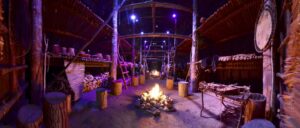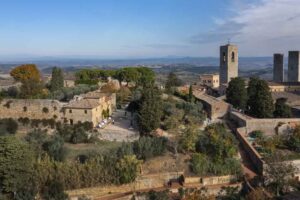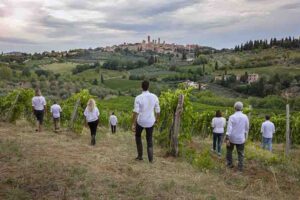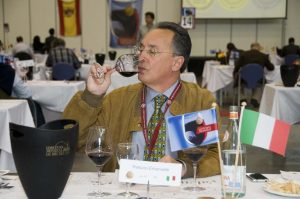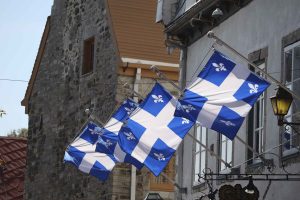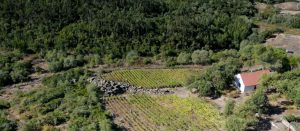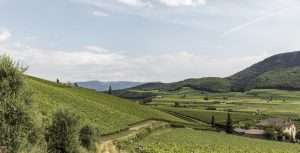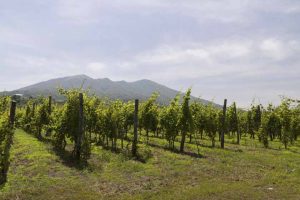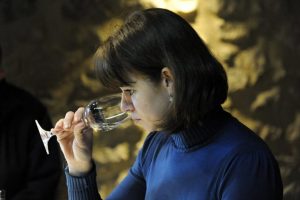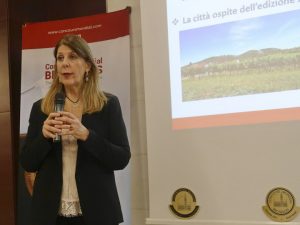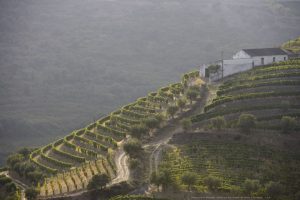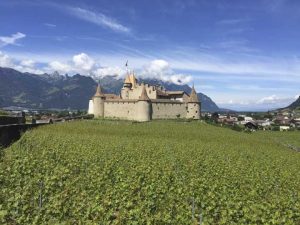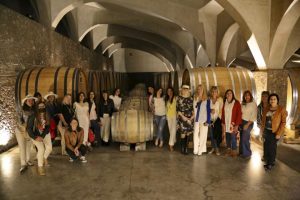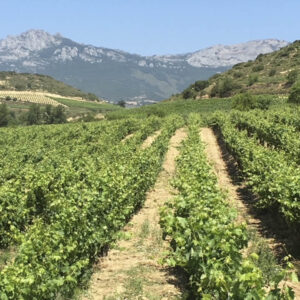Cantine Astroni, des portes de l’enfer à votre table.
**The translation is at the end of the article**
Cantine Astroni, des portes de l’enfer à votre table. La Falanghina et le Piedirosso, des vins de terre brûlante!
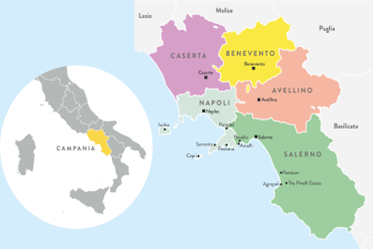
Texte écrit par Susana Ochoa Vega.
La Campania.
Une région du sud-ouest de l’Italie connue pour son littoral spectaculaire et ses inestimables ruines antiques.
Ayant une superficie d’environ 13.590 km2 et de 442 communes, la Campanie est divisée en 5 provinces et une ville métropolitaine : Napoli (Naples).
À l’intérieur de La Campania, on trouve une zone appelée « Campi Flegrei » et c’est ici que la capitale « Napoli » est située. Cette ville est localisée entre le volcan Vésuve et les eaux bleues de la baie, à l’intérieur de la région napolitaine. Cet endroit est aussi le berceau de la pizza margherita et de l’une des chansons les plus représentatives de l’Italie : O sole mio.
À l’ouest de la capitale on y trouve Pozzuoli. Une petite ville située au bord de la mer et où il est possible d’admirer le Vésuve, Naples, Sorrente et l’ile de Capri.
Pozzuoli possède un excellent port, qui à l’époque, fut un important lieu de trafic commercial et de voyageurs surtout pour la colonie grecque. Pozzuoli garde encore ses ruines antiques que nous pouvons visiter encore, telles que l’amphithéâtre Puteolano, le centre-ville qui est proche de la zone du port et Le Temple de Serapide, qui en réalité était un ancien marché romain de Pozzuoli où les commerçants de l’époque vendaient leurs produits qui comprenaient même des esclaves. Le Temple de Serapide a été pris à tort pour un temple dédié à Serapide, une divinité égyptienne vénérée par les Romains, d’où son nom. Pozzuoli est caractérisé également par sa grande activité volcanique où il est possible de voir les émanations de soufre tout autour de la zone et comme preuve, le Vulcano Solfatara, toujours actif. Pozzuoli est aussi la ville qui a vu naître Sofia Loren.
Une autre attraction dans la région de Napolis est L’Eremo dei Camaldoli qui est un complexe historique fondé en 1585 par Giovanni d’Avalos et réalisé par Domenico Fontana. Ce bâtiment artistique est situé dans la cime de la colline de Camaldoli et a été construit à l’emplacement où se trouvait une église dédiée à la Transfiguration, plus tard dédiée au Saint Rédempteur.
Au cours de son histoire, cette monumentale construction a été supprimée à deux reprises, en 1885 par Napoléon et en 1866 par Savoie. Actuellement, le complexe est géré par les religieuses Brigidine.
La végétation naturelle ainsi que les potagers, les jardins et le vignoble font partie de ce monument historique de La colline dei Camaldoli qui est entourée par environ 130 hectares de forêt et d’un panorama impressionnant sur le golf de Naples, le Vésuve et de nombreuses structures volcaniques de cette région napolitaine.
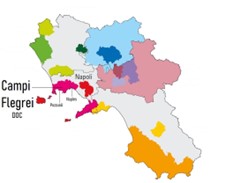
Le Cratère Astroni est un espace naturel protégé qui est situé entre Pozzuoli et Napoli, dans « Campi Flegrei Doc ». Il est un des plus grands cratères et le meilleur conservé parmi une trentaine qui se trouvent dans la zone de Campi Flegrei.
En raison de la concentration volcanique de la région vous pouvez constamment sentir le soufre. La nourriture a un goût de terre volcanique exquise à mon goût et les raisins ne font pas exception.
Dans la région de La Campania il est possible de trouver plus de 100 variétés de vignes indigènes, quantité qu’on ne retrouve dans aucune autre zone de production vitivinicole. La richesse de ce patrimoine ampélographique est due grâce à l’environnement, à la richesse des différents terroirs et bien sûre, aux vignes autochtones qui, ensemble, font le succès de l’histoire vinicole millénaire de La Campania.
Le Falanghina est un cépage autochtone, une variété blanche typique de la Campanie qui adore les sols volcaniques poreux et le climat méditerranéen chaud de la région napolitaine, surtout de la zone de Campi Flegrei. Il s’agit d’un cépage tardif qui a besoin d’être planté dans une bonne orientation car c’est primordial d’avoir pour lui, l’ensoleillement en quantité et en qualité. Dans l’antiquité, les romains l’utilisaient pour élaborer le Falernum. Le Piedirosso est un cépage autochtone, rouge, rare et très ancien. Native du mont Vésuve et cultivé dans la région napolitaine. Considéré comme une spécialité de la Campanie, le nom de ce cépage « Piedirosso » est dû à la couleur rouge de la tige qui apparaître lorsque que les raisins arrivent à maturité.
La mémoire est une valeur essentielle pour ceux qui placent leurs racines dans la terre.
C’est le thème de la famille Varchetta. Une famille qui se consacre à la production de vin depuis plus de cent ans. En 1891, Vincenzo Varchetta a pris la décision de propulser son rêve; mais c’est plutôt son fils Giovanni qui, à peine revenu de la seconde guerre mondiale, a réussi à transformer les illusions de son père en réalité.
En 1999 et avec une histoire de quatre générations, la famille a fondé l’actuelle « Cantine Astroni » dans la commune napolitaine. Située en Campi Flegrei Doc, Cantine Astroni est construite sur les pentes externes du cratère Astroni autrefois réserve de chasse aux Bourbons, aujourd’hui réserve naturelle d’État, gérée par WWF Italie.
L’engagement de Cantine Astroni est de diffuser le savoir-faire, de valoriser la tradition et surtout de faire briller les cépages autochtones dont, la Falanghina et le Piedirosso dei Campi Flegrei à travers la protection de la biodiversité et la défense des traditions vitivinicoles de la région.
La Campania est une « Terra Felix », dont, les sols sont fertiles et la biodiversité végétale est en éclosion. C’est exactement ici que Cantine Astroni, qui est composé de quatre vignobles : Vigna Imperatrice, Vigna Astroni, Tenuta Camaldoli et Tenuta Jossa, cultive les vignes indigènes pré-phylloxéra et non greffées dans des sols calcaires, argileux, limoneux, sableux et volcaniques, ce qui donnent des vins savoureux dotés de caractéristiques uniques. Une taille en guyot et une vendange manuelle pour assurer que les raisins seront en bon état et commenceront leur fermentation au bon endroit et dans le moment exact.
Pour célébrer ses 25 ans Cantine Astroni a organisé deux Laboratoires de dégustation :
Colle Imperatrice « Campi Flegrei Falanghina : il bianco figlio del fuoco e del mare »
Colle Rotondella “Campi Flegrei Piedirosso: la semplicità è una complessità risolta”
Ce laboratoire de dégustation a été dirigé par: Adele Granieri, Vincenzo Varchetta, Franco De Luca, Gerardo Vernazzaro et Chiara Giorleo. Le tout sous la direction de Cristina Varchetta.
Pendant une journée la presse spécialisée a été témoins d’une dégustation verticale, au goût sec, qui a démontré que les vins issus du cépage Falanghina sont capables de vieillir en beauté.
Voici les millésimes dégustés de la gamme Colle Imperatrice.
«Campi Flegrei Falanghina: il bianco figlio del fuoco e del mare»
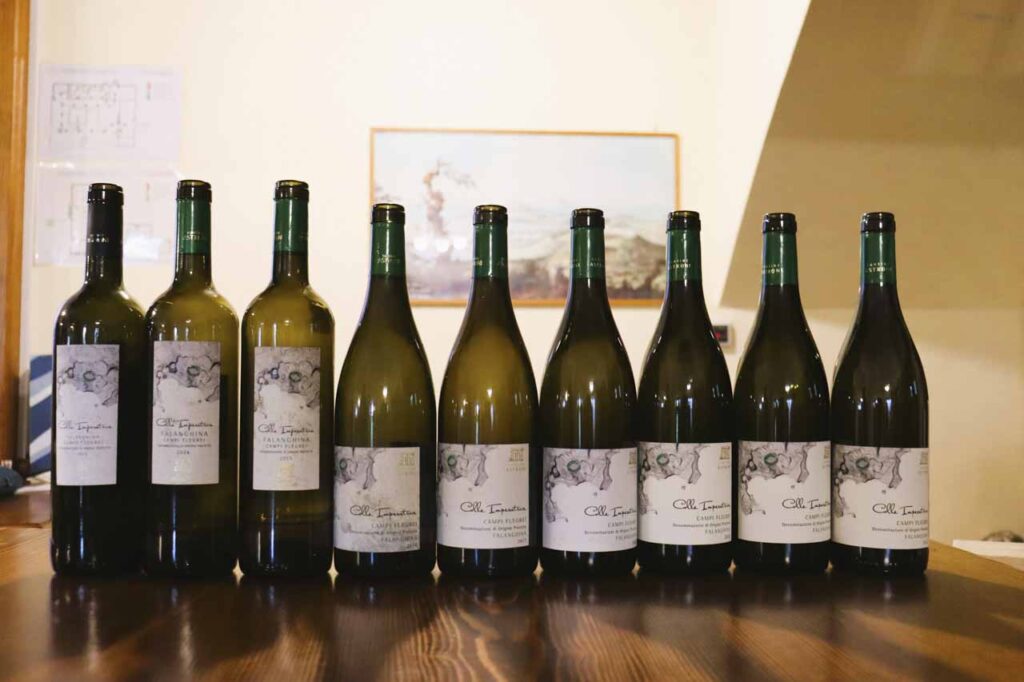
- Frais et salin avec des arômes de lime, expressif!
- Avec des arômes de silex et de noyaux, original!
- Rond et fruité, invitant!
- Des fruits blancs démontrant une belle acidité, sophistiqué!
- Un goût minéral & volcanique, séduisant!
- Vif, droit, croquant, pomme verte et parfums de la mer, tropical!
- Belle acidité, végétal, aromes d’algues, simplement nature totale!
- On goûte le terroir volcanique poreux et le méditerranéen, ça annonce beaucoup!
- Rafraîchissant avec des notes d’agrumes, des frissons garantis!
- Végétal, frais et salin avec une finale citronnée, rafraîchissant!
Les vins rouges issus du cépage « Piedirosso » sont des vins avec une robe rouge rubis aux reflets violets. Les arômes de groseilles, de prunes et de petits fruits rouges sont intenses. Les vins sont corsés et les tanins sont présents. Des parfums de romarin, de menthe, de violette et de géranium, ainsi que des notes grillées et fumées qui sont typiques et incomparables de ce cépage.
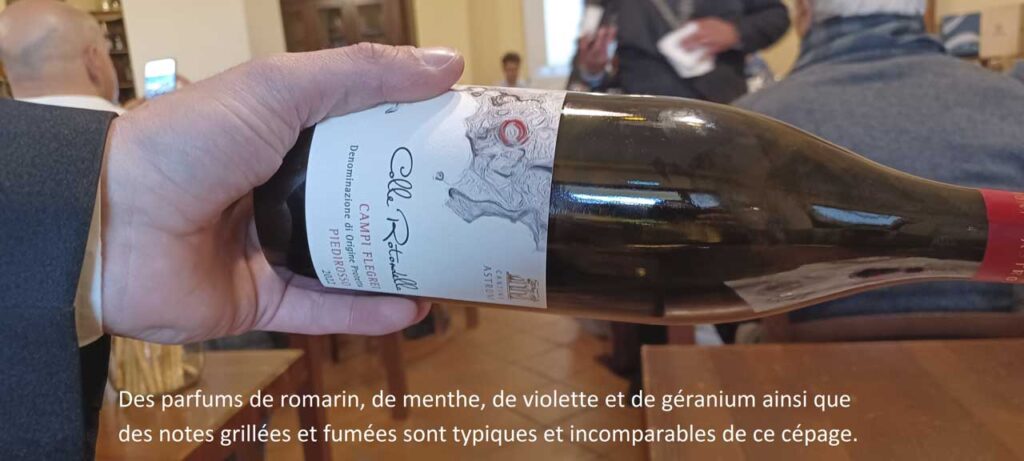
La gastronomie des restaurants : “La Terrasa”, du Gran Hôtel Serapide, “Ristorante Sud” (étoile Michelin) de la Chef Marianna Vitale, le Ristorante “Abraxas Osteria” di Nando Salemme et “Ristorante Caracol” (étoile Michelin) du chef Angelo Carannante accompagné du sommelier Giannantonio Scotto Di Vetta ont fait le complément idéal pour apprendre à faire des accords des vins de Cantine Astroni élaborés avec des cépages autochtones de Campi Flegrei.
Nous sommes aux portes des Enfers, selon la mythologie grecque; dans la terre brûlante, bien que ses cratères soient remplis d’eau et que ses rives accueillent une végétation d’un paradis perdu, Cantine Astroni.
Pour bien planifier votre visite à la région napolitaine et visiter Cantine Astroni, voici le lien : https://cantineastroni.com

Pour voir les photos du 25ème anniversaire de la Cantina Astroni, voici le lien : https://labeauteduvin.com/galerie-dalbums
Pour lire plus concernant les vins volcaniques, voici la chronique de Chiara Giorleo, spécialiste en communication oeno-gastronomique : https://thebeautyofwine.com/volcano-wines
Astro brut, Campi Flegrei DOP.
Obtenu 100% de la Falanghina cultivé sur les sols volcaniques-sablonneux du Campi Flegrei et vinifié selon la méthode «charmat» . Ce mousseux a été élevé sur lies fines entre 4 et 6 mois.
Dans une robe or brillante les belles et petites bulles s’élèvent en dégageant de fraîches notes d’agrumes. Un brut sec et désaltérant, vivacité totale!

Astro extra dry,
Falanghina spumante, Campi Flegrei DOP.
100% Falanghina planté sur les sols volcaniques et sablonneux du Campi Flegrei. Élaboré selon la méthode «charmat» . Ce mousseux extra sec a été élevé sur lies fines certains mois en cuve inox. D’une couleur or brillante avec des reflets verts, les belles, les petites et les abondantes bulles forment un cordon qui monte pour se mélanger à la mousse blanche et dégager des parfums floraux et de fruits blancs. Son goût minéral et volcanique s’exprime accompagné d’une bonne acidité et d’un équilibre remarquable. Une grande persistance en finesse!

Astro Brut rosé.
Est un « spumante » élaboré d’un assemblage des cépages Piedirosso et Aglianico, plantés dans des sols de sable, d’argile et de calcaire. Également, vinifié selon la « méthode charmat ». Une fermentation de deux semaines et un élevage en acier inox pendant quelques mois ayant comme but de chercher la fraîcheur. Un mousseux rosé avec des parfums de cerise, de framboise et de rose qui combinés à la belle acidité offrent une caresse au palais!

“Cantine Astroni, from the gates of hell to your table.
Falanghina and Piedirosso, wines from scorched earth!”

Campania.
A region in southwestern Italy known for its spectacular coastline and invaluable ancient ruins. Covering an area of approximately 13,590 km2 and comprising 442 municipalities, Campania is divided into 5 provinces and one metropolitan city: Napoli (Naples).
Within Campania, there is an area called “Campi Flegrei,” where the capital, Napoli (Naples), is located. This city is situated between Mount Vesuvius and the blue waters of the bay, within the Neapolitan region. This place is also the birthplace of the Margherita pizza and one of Italy’s most representative songs: “O Sole Mio.”
To the west of the capital lies Pozzuoli, a small town located on the seashore, offering views of Mount Vesuvius, Naples, Sorrento, and the island of Capri. Pozzuoli has an excellent port, which was once an important hub for commercial traffic and travelers, especially for the Greek colony. Pozzuoli still preserves its ancient ruins, which visitors can explore, such as the Puteoli Amphitheatre, the city center near the port area, and the Temple of Serapis. The Temple of Serapis was actually an ancient Roman market where merchants of the time sold their products, including slaves. It was mistakenly believed to be a temple dedicated to Serapis, an Egyptian deity worshipped by the Romans, hence its name. Pozzuoli is also characterized by its significant volcanic activity, with visible sulfur emissions in the area, exemplified by the still-active Solfatara Volcano. It is also the birthplace of Sophia Loren.
Another attraction in the Naples area is the Eremo dei Camaldoli, a historical complex founded in 1585 by Giovanni d’Avalos and designed by Domenico Fontana. This artistic building is located atop the Camaldoli hill, where a church dedicated to the Transfiguration once stood, later dedicated to the Holy Redeemer. Throughout its history, this monumental construction was suppressed twice, in 1885 by Napoleon and in 1866 by the Savoy. Currently, the complex is managed by the Brigidine nuns. The natural vegetation, vegetable gardens, gardens, and vineyard are part of this historical monument on the hill of Camaldoli, surrounded by approximately 130 hectares of forest and an impressive panorama of the Gulf of Naples, Mount Vesuvius, and many volcanic structures of the Neapolitan region.

The Astroni Crater is a protected natural area located between Pozzuoli and Napoli, in the “Campi Flegrei Doc” region. It is one of the largest and best-preserved craters among the thirty or so found in the Campi Flegrei area. Due to the region’s volcanic concentration, you can constantly smell sulfur. The food has an exquisite taste of volcanic earth in my opinion, and grapes are no exception.
In the Campania region, it is possible to find more than 100 varieties of indigenous vines, a quantity not found in any other wine-producing area. The richness of this ampelographic heritage is thanks to the environment, the richness of the different terroirs, and of course, the indigenous vines that together make up the success of Campania’s millennial wine history.
Falanghina is an indigenous grape variety, a typical white variety of Campania that loves porous volcanic soils and the hot Mediterranean climate of the Neapolitan region, especially in the Campi Flegrei area. It is a late-ripening grape that needs to be planted in a good orientation because it is crucial to have both quantity and quality of sunlight for it. In antiquity, the Romans used it to make Falernum.
Piedirosso is an indigenous, red, rare, and very ancient grape variety. Native to Mount Vesuvius and cultivated in the Neapolitan region. Considered a specialty of Campania, the name of this grape “Piedirosso” is due to the red color of the stem that appears when the grapes ripen.
Memory is an essential value
for those who root themselves in the earth.
This is the story of the Varchetta family, who has been dedicated to winemaking for over a hundred years. In 1891, Vincenzo Varchetta made the decision to pursue his dream, but it was his son Giovanni who, shortly after returning from World War II, managed to turn his father’s dreams into reality.
In 1999, with a history spanning four generations, the family founded the current “Cantine Astroni” in the municipality of Naples. Located in Campi Flegrei Doc, Cantine Astroni is built on the outer slopes of the Astroni crater, once a hunting reserve for the Bourbons and now a state nature reserve managed by WWF Italy.
Cantine Astroni’s commitment is to spread know-how, enhance tradition, and above all, to showcase the indigenous grape varieties such as Falanghina and Piedirosso dei Campi Flegrei through the protection of biodiversity and the defense of the region’s winemaking traditions. Campania is a “Terra Felix,” with fertile soils and blossoming plant biodiversity. It is precisely here that Cantine Astroni, consisting of four vineyards—Vigna Imperatrice, Vigna Astroni, Tenuta Camaldoli, and Tenuta Jossa—cultivates pre-phylloxera and ungrafted indigenous vines in limestone, clay, loamy, sandy, and volcanic soils, resulting in flavorful wines with unique characteristics. Guyot pruning and manual harvesting ensure that the grapes are in good condition and start their fermentation in the right place and at the right time.
To celebrate its 25th anniversary, Cantine Astroni organized two tasting workshops:
Colle Imperatrice “Campi Flegrei Falanghina: the white wine born from fire and sea”
Colle Rotondella “Campi Flegrei Piedirosso: simplicity is a solved complexity”
These tasting workshops were led by Adele Granieri, Vincenzo Varchetta, Franco De Luca, Gerardo Vernazzaro, and Chiara Giorleo, all under the direction of Cristina Varchetta.
For a day, the specialized press witnessed a vertical tasting of dry wines, demonstrating that wines made from the Falanghina grape are capable of aging beautifully.
Here are the vintages tasted from the Colle Imperatrice range.
“Campi Flegrei Falanghina: the white wine born from fire and sea”

- Fresh and saline with lime aromas, expressive!
- With flint and nut aromas, original!
- Round and fruity, inviting!
- White fruit demonstrating beautiful acidity, sophisticated!
- Mineral and volcanic taste, seductive!
- Lively, straight, crispy, green apple and sea scents, tropical!
- Beautiful acidity, vegetal, seaweed aromas, simply total nature!
- You can taste the porous volcanic terroir and the Mediterranean, promising a lot!
- Refreshing with citrus notes, guaranteed chills!
- Vegetal, fresh and saline with a lemony finish, refreshing!
Red wines made from the Piedirosso grape have a ruby red color with violet reflections. The aromas of currants, plums, and small red fruits are intense. The wines are full-bodied, and the tannins are present. Scents of rosemary, mint, violet, and geranium, as well as grilled and smoked notes, are typical and incomparable to this grape variety.

The gastronomy of the restaurants “La Terrasa” at the Gran Hotel Serapide, “Ristorante Sud” (Michelin star) by Chef Marianna Vitale, “Ristorante Abraxas Osteria” by Nando Salemme, and “Ristorante Caracol” (Michelin star) by Chef Angelo Carannante, accompanied by sommelier Giannantonio Scotto Di Vetta, provided the ideal complement to learn how to pair wines from Cantine Astroni made with indigenous grape varieties from Campi Flegrei.
At the gates of Hell according to Greek mythology, in a burning land where the craters are filled with water and the shores welcome vegetation from a lost paradise, you will find Cantine Astroni.
To plan your visit to the Naples region and visit Cantine Astroni, here is the link: [https://cantineastroni.com](https://cantineastroni.com)
To see photos of the 25th anniversary of Cantina Astroni, here is the link: [https://labeauteduvin.com/galerie-dalbums](https://labeauteduvin.com/galerie-dalbums)

To learn more about volcanic wines, here is the article by Chiara Giorleo, a specialist in oeno-gastronomic communication: [https://thebeautyofwine.com/volcano-wines](https://thebeautyofwine.com/volcano-wines)
Astro brut, Campi Flegrei DOP.
Made from 100% Falanghina grapes grown in the volcanic-sandy soils of Campi Flegrei and vinified using the “charmat” method. This sparkling wine has been aged on fine lees for 4 to 6 months.
In a bright gold robe, beautiful small bubbles rise, releasing fresh citrus notes. A dry and refreshing brut, total liveliness!

Astro extra dry,
Falanghina spumante, Campi Flegrei DOP.
100% Falanghina planted in the volcanic-sandy soils of Campi Flegrei. Made using the “charmat” method. This extra dry sparkling wine has been aged on fine lees for several months in stainless steel tanks. With a bright gold color and green reflections, the beautiful, small, and abundant bubbles form a cord that rises to mix with the white foam, releasing floral and white fruit aromas. Its mineral and volcanic taste is expressed with good acidity and remarkable balance. A great finesse and persistence!

Astro Brut rosé.
Is a “spumante” made from a blend of Piedirosso and Aglianico grapes, planted in sandy, clay, and limestone soils. Also, vinified using the “charmat” method. A two-week fermentation and aging in stainless steel for a few months aim to preserve freshness. A rosé sparkling wine with aromas of cherry, raspberry, and rose that, combined with the beautiful acidity, offer a caress on the palate!
Récents articles
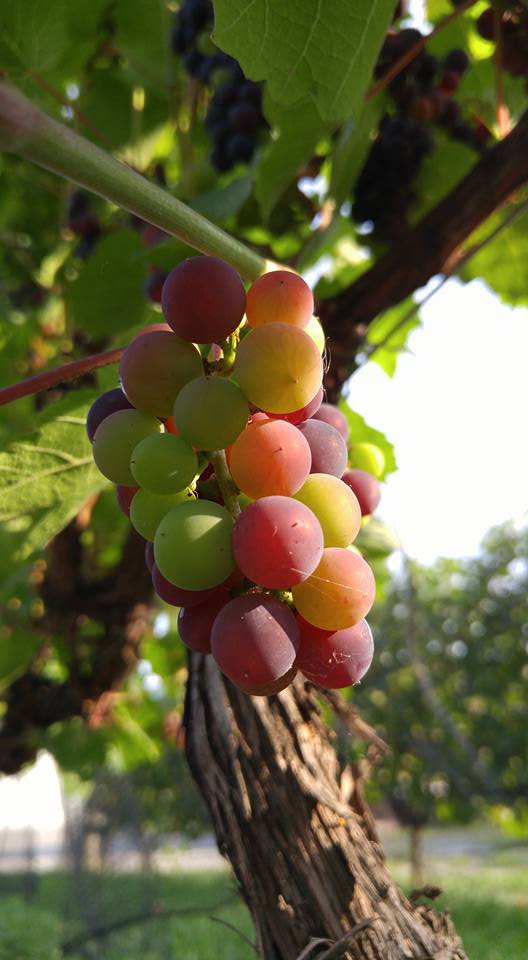
Stay tuned for new articles and industry trends !
Subscribe to our newsletter and make sure you don’t miss the publication new editions of the magazine!



